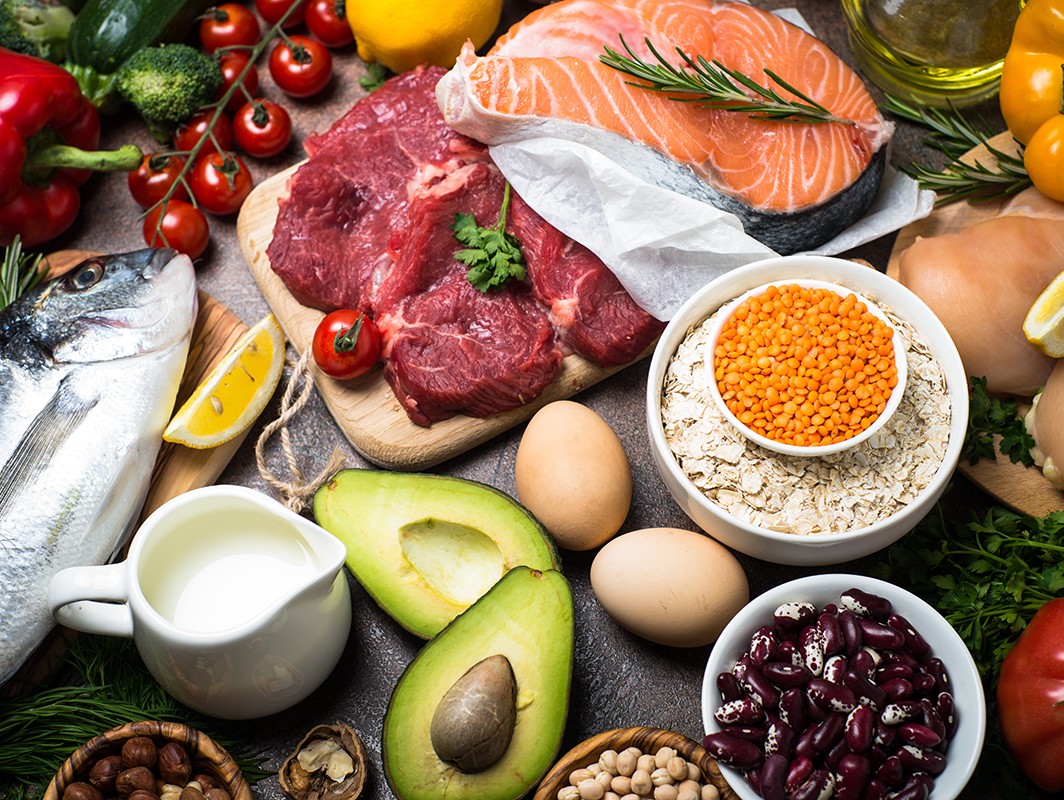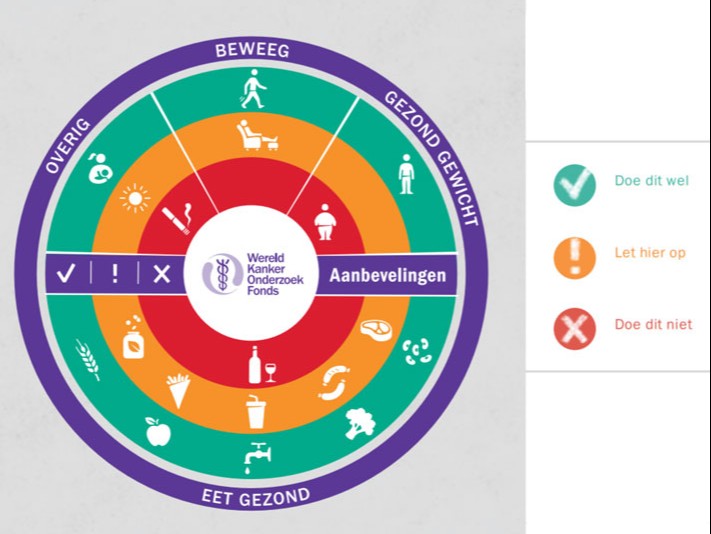
The consumption of (red) meat and meat products is often under debate. Points of discussion are “not sustainable” (high CO2 emission) and not healthy (increased risk of colorectal cancer). But meat also has good nutritional properties. So the question arises: does meat fit in a healthy and sustainable diet?
Recently, the World Cancer Research Fund (WCRF) published new guidelines for cancer prevention based on the Continuous Update Project (CUP). In this report, among others, all studies regarding the relation between the consumption of meat, fish and dairy products and the risk of cancer are bundled and summarised. An earlier publication by the IARC caused confusion, because processed meat was put in the same category as smoking (see framework IARC classification) based on the number of good scientific studies available.
In 2015, a working group of 22 international experts studied more than 800 scientific publications on the relation between meat consumption and cancer risk. This working group was commissioned by the WHO-International Agency for Research on Cancer (IARC). The approach: is the consumption of red and processed meat a hazard for causing cancer?
Processed meat was classified as carcinogenic to humans (Group 1), based on sufficient evidence in humans that the consumption of processed meat causes colorectal cancer.
The committee classified the consumption of red meat as probably carcinogenic to humans (Group 2A), based on limited evidence that the consumption of red meat causes cancer in humans and strong mechanistic evidence supporting a carcinogenic effect. Haem iron in red meat and N-nitrosocompounds in processed meat may cause DNA damage, which if not repaired, may ultimately cause cancer (Lewin et al). The classification of processed meat in Group 1, the same category as smoking, was based on the strength of the scientific evidence, not on the strength of the effect. Smoking increases the risk of lung cancer about 10-fold, while consumption of 50 grams of processed meat increases the risk of colorectal cancer with about 18%. Thus, the relative risks are very different, but the scientific evidence is similar. The communication about the difference between a hazard and a risk was not optimal.
Also, the nutritional importance of the consumption of red meat was not discussed. Meat contains essential amino acids that our body is not able to produce . Also, meat-related vitamins and minerals are better absorbed by our digestion system than from vegetable sources. The current advice of the Netherlands Nutrition Centre regarding meat consumption is: ‘Don’t eat more than 500 grams of meat per week (including meat products), of which a maximum of 300 grams of red meat’.
‘Red meat’ is unprocessed meat of cows, sheep, horses and calves’. Minced or sliced red meat is also marked as ‘unprocessed’. ‘Processed meat’ is meat that is altered by salts, in brine, fermenting, smoking or another process to improve the flavour or extend the shelf life. Meat products also fall into this category.

As a result of the recent update, the WRCF has published a new guideline for the consumption of meat and meat products (see figure 1). Per head of the population, in the Netherlands we consumed an average of 43.4 kg of meat annually (RIVM period 2012-2016). Men consumed around 130 grams and women around 88 grams a day. More in detail, 27 grams of this is meat from chicken and 29 grams meat products. Keeping the recommendation of the Netherlands Nutrition Centre in mind, a Dutch man shouldn’t just reduce his consumption of meat, but also give part of it to its wife, since it also contains valuable nutrients for her.
Figure 1: Visual representation of the advice of World Cancer Research Fund (www.wkof.nl)
The question for food technologists is the following: can we create a product that only contains the good properties of meat-products and tastes good as well? Looking from a technological point of view, processed meat and meat products can, based on process and composition, be divided into several groups, including a group of ‘composite products’. With these products, it’s possible to add ingredients and additives of which it’s known they can restore damage to the DNA (Le Leu et al). As an example, in the Phytome project (www.phytome.eu), it’s shown that adding 2 grams of natural phenols coming from fruits and vegetables (phytochemicals) to meat products works preventively in preventing the damage to DNA in the colon.
Another direction of research into decrease the risk of consuming meat products is combining vegetable and animal protein. In these ‘hybrid products’, good components of animal protein can be maintained, while bad components are eliminated or fixed by compounding them with one or multiple vegetal proteins or added hydrocolloids. By making a choice (from the green circle in Figure 1), it becomes possible to generate more tasty products and eliminate additives like nitrite and nitrate.
Meat is still part of a healthy diet. We do have to eat less of it on average. With new technology and hybrid, composite products, it’s feasible. Food technologist are challenged to come with solutions to provide healthy, tasty and sustainable solutions.
Group 1: Carcinogenic to humans. Very low concentrations are already dangerous to your health, such as arsenic, asbestos, cadmium and plutonium. But also tobacco, alcohol, ultraviolet radiation (sun) and processed meat are in Group 1. The evidence is clearly established, but the risk in causing cancer differs strongly. For example: if no one in Great Britain smokes anymore, this prevents 64,500 causes of lung cancer annually. If no one there eats red or processed meat anymore, this prevents 8.800 cases of colon cancer annually.
Group 2a: Probably carcinogenic to humans. Limited evidence of carcinogenicity in humans and sufficient evidence of carcinogenicity in experimental animals or Inadequate evidence of carcinogenicity in humans and sufficient evidence of carcinogenicity in experimental animals and strong evidence that the carcinogenesis is mediated by a mechanism that also operates in humans.
Group 2b: Possible carcinogenic to humans. Limited evidence of carcinogenicity in humans and less than sufficient evidence of carcinogenicity in experimental animals
Group 3: Not classifiable as to its carcinogenicity to humans ; Evidence of carcinogenicity is inadequate in humans and inadequate or limited in experimental animals
Group 4: Probably not carcinogenic to humans.
References
-World Cancer Research Fund, Continuous Update Project 2018
-Le Leu et al (2015) Butyrylated starch intake can prevent red meat-induced adducts in human rectal tissue. British Journal of Nutrition 114: 220
-Lewin et al (2006) Red meat enhances the colonic formation of the DNA adduct, Cancer Research 66 (3): 1859-1865
-Van Rossum et al (2016) The diet of the Dutch, RIVM letter report 2016-0082
Source: © WUR